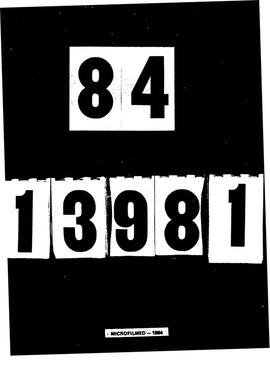| dc.contributor.author | Mcquillen, Jeffrey S., | en_US |
| dc.date.accessioned | 2013-08-16T12:29:02Z | |
| dc.date.available | 2013-08-16T12:29:02Z | |
| dc.date.issued | 1984 | en_US |
| dc.identifier.uri | https://hdl.handle.net/11244/5213 | |
| dc.description.abstract | The study investigates the development of compliance-resisting behaviors as a function of age, agent, and the types of compliance-gaining requests received by the target. Subjects were first-, fourth-, and tenth-grade children. An inductive approach to message construction was employed. Subjects were required to generate compliance-resisting strategies and justifications for those strategies in response to three communication situations. Each task situation was associated with a different age/status agent (mother, best friend, younger child). Additionally, each scenario presented to the subjects varied according to the type of compliance strategy used (simple request, incentive request, altruistic request). Results support a significant positive association between the three major independent variables (age of subjects, type of request used to gain compliance, and the agent to the compliance attempt) and the dependent variables (category of compliance-resisting strategy, structurally implied perpective-taking, and level of rationale for constructed strategy). This study is an initial step in describing how children develop compliance-resisting competence. | en_US |
| dc.format.extent | xii, 179 leaves : | en_US |
| dc.subject | Speech Communication. | en_US |
| dc.title | An investigation of the development of compliance-resisting behaviors in first-, fourth-, and tenth grade children / | en_US |
| dc.type | Thesis | en_US |
| dc.thesis.degree | Ph.D. | en_US |
| dc.thesis.degreeDiscipline | Department of Communication | en_US |
| dc.note | Source: Dissertation Abstracts International, Volume: 45-03, Section: A, page: 0683. | en_US |
| ou.identifier | (UMI)AAI8413981 | en_US |
| ou.group | College of Arts and Sciences::Department of Communication | |
